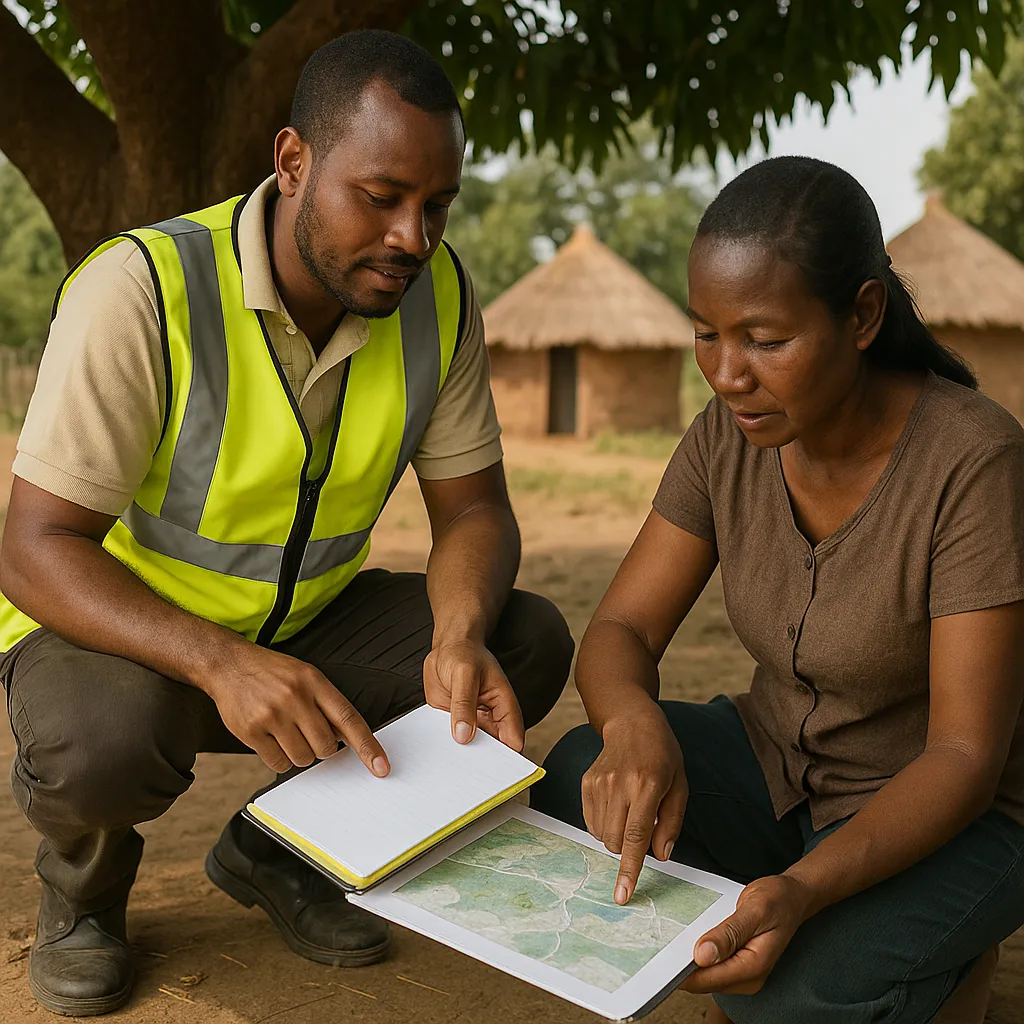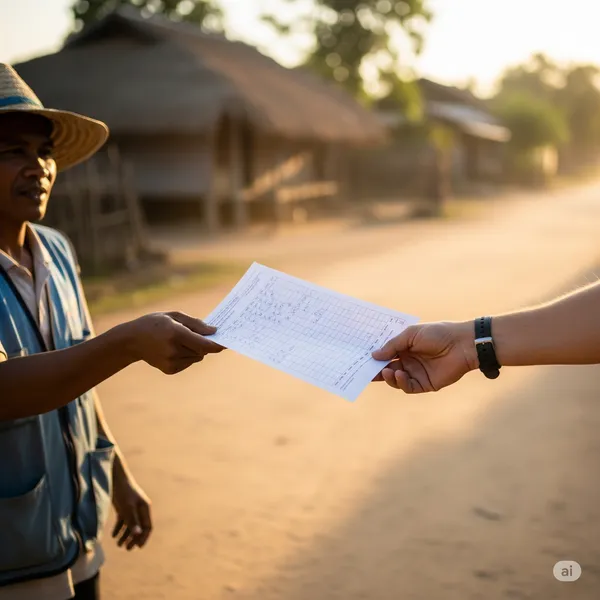Adaptive Monitoring in Access-Constrained Environments
Published on: Tue Mar 11 2025 by Ivar Strand
Adaptive Monitoring: A Framework for Verification in Access-Constrained Environments
In fragile and conflict-affected states, the only constant is unpredictability. Traditional monitoring and evaluation plans, often designed as rigid, linear processes, are predicated on assumptions of stability and predictable access. These plans are brittle; they shatter on first contact with the operational reality of a volatile environment. A sudden security incident, a political crisis, or a natural disaster can render a carefully crafted monitoring schedule obsolete overnight, leaving a critical information vacuum.
The key challenge is not to predict these exogenous shocks, but to design a monitoring system that anticipates them. This requires a shift from static planning to an adaptive framework—one capable of modifying its methodology in response to changing conditions without compromising the integrity of its core verification function.
This paper outlines a framework for building such a resilient and adaptive monitoring system, designed to function through disruption, not just in its absence.
The Brittleness of Static Plans
A static monitoring plan is a significant liability in a fluid context. Its primary failure point is the treatment of access as a binary condition—either it exists or it does not. When unforeseen events curtail physical access, a rigid plan often has no pre-approved alternative. The result is typically an ad-hoc scramble for information or, more commonly, a complete cessation of monitoring activities.
This creates a dangerous paradox: the flow of information stops at the precise moment when decision-makers need it most to manage heightened risk and adapt programming. A plan that only works in a best-case scenario is not a plan; it is an assumption waiting to be proven false.
A Framework for Adaptive Monitoring: The Traffic Light System
An effective adaptive monitoring system is not a single plan but a hierarchy of pre-designed methodologies linked to defined access levels. We have found a “Traffic Light” framework to be a simple, intuitive, and robust model for this purpose.
-
Green Level: Permissive Environment This is the baseline operational state, allowing for the full suite of monitoring methods. It includes direct access for international and national staff, large-scale quantitative surveys, and in-depth qualitative methods like focus group discussions and extensive key informant interviews. While this represents the methodological “gold standard,” it must be viewed as a contingent state, not a permanent one.
-
Yellow Level: Constrained Environment This level is activated when conditions deteriorate—for example, due to rising security threats in a specific region or politically motivated access restrictions. Physical access for international staff may be limited or suspended. The system adapts by shifting its methodological mix:
- Greater reliance on vetted Third-Party Monitors (TPM) composed of local enumerators who can operate more discreetly.
- Substitution of large, public meetings with smaller, individual interviews.
- Increased use of remote call-backs to beneficiaries to verify activities.
- The goal is to maintain ground-level data collection, but with a reduced physical footprint and a lower profile.
-
Red Level: Non-Permissive Environment This level is triggered when physical access to a location becomes impossible or poses an unacceptable risk for all monitoring staff, including local enumerators. Monitoring does not cease; it transforms into a fully remote operation. Methodologies may include:
- Geospatial Analysis: Utilising satellite imagery to verify the completion of infrastructure, assess agricultural patterns, or track population movements.
- Remote Call Monitoring: Employing call centres operating from a secure hub to conduct structured surveys with beneficiaries.
- Open-Source Intelligence (OSINT): Systematically analysing local media reports, social media, and other publicly available information to provide contextual awareness, always subject to rigorous cross-verification.
- Partner-Sourced Data: Leveraging data streams from trusted local institutions or community networks that may retain some form of presence.
Operationalizing the Framework: Triggers and Resources
For this framework to be effective, it must be fully operationalised before a crisis occurs.
- Pre-defined Triggers. The shift between Green, Yellow, and Red levels must not be arbitrary. It should be governed by a pre-agreed set of triggers based on objective indicators, such as official security advisories from UNDSS, the closure of a key transportation route, or a specified number of security incidents within a defined area.
- Pre-approved Methodologies and Budgets. The tools, protocols, staffing, and budget for the Yellow and Red levels must be defined and approved at the project’s outset. This ensures that the system can adapt immediately, without the delays caused by needing to seek new approvals in the middle of a crisis.
- An Understanding of Data Limitations. It must be explicitly acknowledged that the granularity and confidence level of data will change as the system shifts from Green to Red. The framework must define what can and cannot be reliably measured at each level. The objective is not to produce perfect data in a Red environment, but to provide the best possible data under the circumstances, with its limitations clearly articulated.
Exhibit A: The Adaptive Monitoring Matrix (A conceptual table is shown. Columns are labelled “Green (Permissive),” “Yellow (Constrained),” and “Red (Non-Permissive).” Rows are labelled with methodologies like “Direct Observation,” “Beneficiary Surveys,” and “Geospatial Analysis.” The cells describe the specific approach for each level. For “Direct Observation,” the cells read: “Int’l & TPM Staff,” “TPM Staff Only,” and “Not Applicable.” For “Geospatial Analysis,” the cells read: “Supplemental,” “Corroborative,” and “Primary Method.”)
Resilience by Design, Not by Chance
In volatile environments, monitoring resilience is not an accident; it is the outcome of a deliberate design process that anticipates failure and plans for contingencies. An adaptive framework moves an organisation from a reactive posture to a planned, proactive one.
This approach ensures a continuous flow of relevant information, allowing programmes to manage risk, learn, and make informed decisions even when conditions are at their worst. By building adaptability into the very core of a monitoring system, we transform it from a brittle instrument, easily broken by crisis, into a resilient tool capable of navigating the inherent unpredictability of fragile states.



